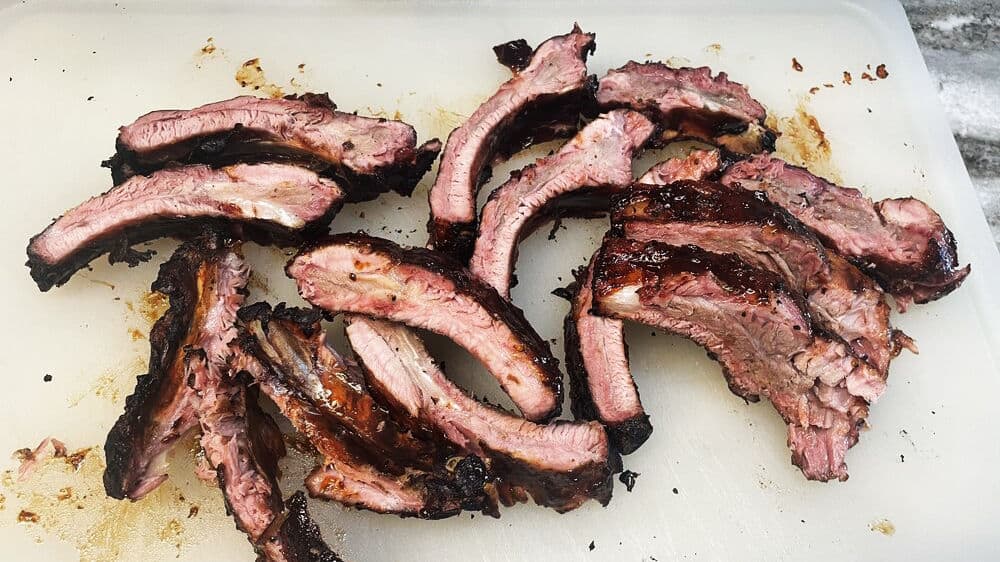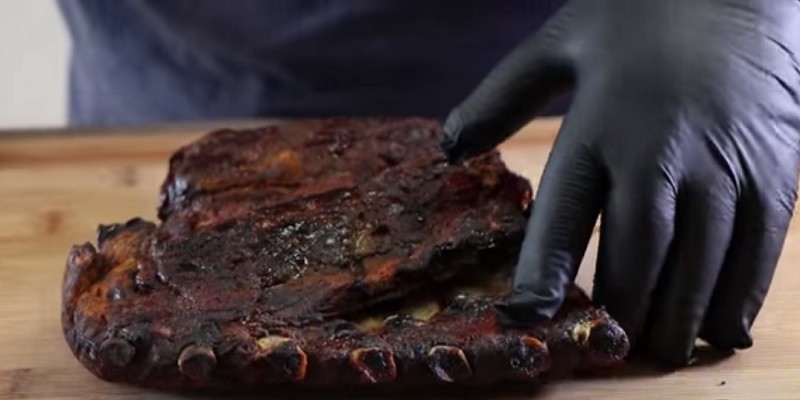Last Updated on December 16, 2023 by Pauline G. Carter
No, smoking frozen meat is not recommended, as it can lead to uneven cooking and potential food safety issues. It’s important to thaw the meat completely before smoking it to ensure a safe and delicious outcome.
Smoking meat is a popular cooking method that infuses flavorful smoke into the meat, giving it a unique and tasty profile. However, when it comes to smoking frozen meat, there are some important considerations to keep in mind. Thawing the meat properly is crucial to ensure even cooking and avoid the risk of harmful bacteria growth.
We’ll explore the potential risks of smoking frozen meat, the best methods for thawing meat before smoking, and some helpful tips for achieving delicious smoked meat every time. By understanding the proper techniques for smoking meat, you can ensure a safe and enjoyable cooking experience.
The Science Behind Smoking Frozen Meat
When it comes to smoking meat, the process involves a delicate balance of temperature, flavor infusion, and texture enhancement. But have you ever considered smoking frozen meat? The concept may seem unconventional, but the science behind smoking frozen meat unveils some intriguing insights. In this section, we’ll delve into the mechanics of smoking frozen meat, exploring how temperature impacts the smoking process and the effects of freezing on meat and smoking.
How Smoking Works
The art of smoking involves subjecting meat to low, indirect heat over an extended period, allowing the flavors of wood or other smoking materials to impart a unique taste. The process of smoking enhances the meat’s texture and creates a delectable smoky taste that appeals to many food enthusiasts.
Impact Of Temperature On Smoking Process
Temperature plays a pivotal role in the smoking process. Low temperatures allow the meat to slowly absorb the infused flavors while maintaining its tender texture. When smoking frozen meat, the temperature dynamics shift, influencing the interaction between the meat and the smoke, ultimately affecting the flavor profile and texture of the final product.
Freezing: The Effects On Meat And Smoking
Freezing meat has implications for both its structural integrity and the smoking process. Ice crystals formed during freezing can puncture cell membranes, potentially leading to moisture loss when the meat thaws. From a smoking perspective, the presence of ice can disrupt the absorption of smoke and alter the distribution of flavor within the meat.
Factors To Consider When Smoking Frozen Meat
When it comes to smoking meat, it’s essential to consider the factors involved when dealing with frozen meat. Smoking frozen meat can be a viable option, but it requires careful attention to various aspects such as food safety, thawing methods, and timing and temperatures for smoking. Let’s delve into these crucial factors to ensure a successful smoking process for frozen meat.
Food Safety Concerns
Smoking frozen meat raises concerns about food safety. It is vital to ensure that the meat reaches the appropriate internal temperature to kill any harmful bacteria. The USDA recommends a minimum internal temperature of 145°F for beef, pork, veal, and lamb, and 165°F for poultry. Thawing and smoking frozen meat properly can help mitigate food safety risks and ensure a safe and enjoyable dining experience.
Thawing Methods And Considerations
Thawing frozen meat prior to smoking is crucial for even cooking and flavor absorption. Several methods can be employed for thawing, including refrigeration, cold water thawing, and microwave defrosting. Refrigeration is the safest method, allowing for a gradual and controlled thawing process. Moreover, it is important to consider the type and size of the meat, as larger cuts will require more time to thaw compared to smaller portions.
Timing And Temperatures For Smoking Frozen Meat
To achieve optimal results when smoking frozen meat, careful attention should be given to the timing and temperatures. It is essential to allow for additional cooking time when smoking frozen meat compared to fresh meat. Additionally, maintaining a consistent smoking temperature, typically ranging from 200°F to 250°F, is crucial for achieving a flavorful and tender outcome. Using a meat thermometer to monitor the internal temperature during the smoking process is recommended to ensure the meat reaches the desired doneness.
Best Practices For Smoking Frozen Meat
Smoking frozen meat can be a convenient option when you want to prepare a delicious meal without waiting for the meat to thaw. However, it’s important to follow certain best practices to ensure that the meat is safely and deliciously smoked. In this guide, we will explore proper handling and preparation, recommended woods for smoking, and cooking times and techniques for smoking frozen meat.
Proper Handling And Preparation
When smoking frozen meat, it’s essential to properly handle and prepare the meat to guarantee food safety and optimal flavor. Here are some best practices to follow:
- Thawing: Ideally, it’s best to thaw the meat completely before smoking. Thawing allows for more even cooking and smoke absorption. However, if you choose to smoke the meat while it’s still frozen, ensure that the meat reaches a safe internal temperature during the smoking process.
- Seasoning: Before smoking, apply your desired seasonings and marinades to enhance the flavor of the meat. Allow the meat to absorb the flavors by seasoning it well in advance of smoking.
- Trimming: Trim excess fat from the meat to prevent flare-ups and ensure a more enjoyable eating experience.
Recommended Woods For Smoking
The choice of wood for smoking can significantly influence the flavor profile of the meat. Certain woods pair well with different types of meat, enhancing their natural flavors. Here are some recommended woods for smoking frozen meat:
| Meat Type | Recommended Woods |
|---|---|
| Beef and Lamb | Hickory, Mesquite, Oak |
| Pork | Apple, Cherry, Maple |
| Poultry | Pecan, Alder, Maple |
Cooking Times And Techniques
Smoking frozen meat requires special attention to cooking times and techniques to ensure that the meat is safely and thoroughly cooked. Here are some guidelines for smoking frozen meat:
- Low and Slow: For optimal results, smoke frozen meat at a lower temperature (225-250°F) for an extended period. This low and slow approach allows the flavors to develop and the meat to become tender.
- Internal Temperature: Use a meat thermometer to monitor the internal temperature of the meat. Ensure that the meat reaches the recommended safe internal temperature for the specific type of meat being smoked.
- Resting Period: After smoking, allow the meat to rest for a short period before slicing and serving. This resting period helps the juices to redistribute within the meat, ensuring a moist and flavorful outcome.
Tips For Enhancing Flavor And Texture
When it comes to smoking frozen meat, knowing how to enhance flavor and texture can make a significant difference in the final outcome. By employing the right techniques and using complementary seasonings, you can elevate the smoky experience of your meat. Below are some effective tips for enhancing the flavor and texture of smoked frozen meat.
Adding Marinades And Seasonings
Marinades and seasonings are essential for infusing rich flavors into smoked frozen meat. Here are some tips to help enhance the taste:
- Use a combination of spices and herbs to create a flavorful dry rub for the meat.
- Consider marinating the frozen meat in a brine solution to tenderize and add moisture.
- Experiment with citrus-based marinades or Asian-inspired flavors for a unique twist.
Searing And Finishing Techniques
Searing and finishing techniques can enhance the texture and appearance of smoked frozen meat:
- Sear the meat over high heat to create a flavorful crust before smoking it to impart a smoky flavor.
- After smoking, allow the meat to rest to redistribute juices and achieve a more succulent texture.
- Glaze the meat with a sweet or tangy sauce during the finishing stage to add a caramelized exterior.
Presentation And Serving Suggestions
Enhance the overall experience of enjoying smoked frozen meat with these presentation and serving suggestions:
- Slice the meat against the grain for a more tender bite and improved texture.
- Pair the smoked meat with complementary side dishes such as grilled vegetables, fresh salads, or creamy mashed potatoes.
- Garnish the dish with fresh herbs or a drizzle of infused oil for an appealing presentation.

Credit: www.smoking-meat.com
Frequently Asked Questions For Can You Smoke Frozen Meat?
Can Frozen Meat Be Smoked For Cooking?
Yes, smoking frozen meat is safe but may take longer and risk uneven cooking.
What Is The Best Way To Smoke Frozen Meat?
Thaw the meat first to ensure even smoking and quicker cooking.
Does Smoking Frozen Meat Affect The Taste?
Smoking frozen meat can result in a slightly different flavor profile.
Are There Any Safety Concerns When Smoking Frozen Meat?
Properly thaw and handle to avoid bacterial growth and ensure safe consumption.
Can Smoking Frozen Meat Affect Its Texture?
Smoking frozen meat may affect the texture due to uneven cooking.
What Are The Recommended Thawing Methods Before Smoking?
Thaw frozen meat in the refrigerator or cold water for safety and even cooking.
Conclusion
While smoking frozen meat is technically possible, it’s not recommended due to food safety concerns. It’s best to thaw meat properly prior to smoking to ensure even cooking and minimize the risk of harmful bacteria. Always prioritize food safety when preparing and handling meat for smoking or any cooking method.
Happy smoking!
About Author (Pauline G. Carter)

Pauline G. Carter is a well-known pet blogger who has written about the world of pets for several years. She is passionate about pets, from cats and dogs to birds, reptiles, and poultry. Her blog, which is updated regularly, is filled with articles and guides on pet care, nutrition, and training. She also shares her experiences and observations on pet ownership, making her blog relatable and informative for pet lovers. She is a true animal advocate and is dedicated to promoting responsible pet ownership. Let’s Go …





